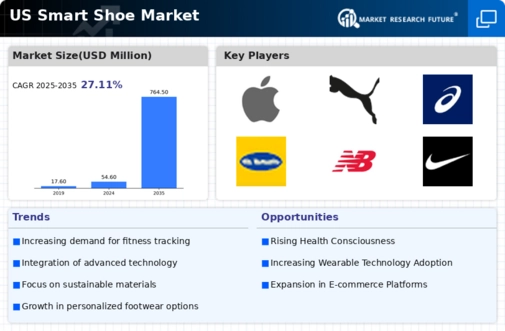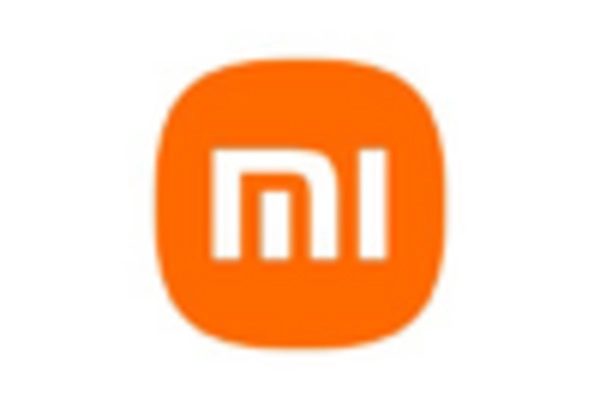Consumer Demand for Customization
The smart shoe market is witnessing a shift towards customization, driven by consumer preferences for personalized products. As individuals seek unique footwear that reflects their style and meets their specific needs, brands are responding by offering customizable smart shoes. This trend is particularly evident among younger consumers, who prioritize individuality and self-expression. In 2025, it is estimated that the customization market in the footwear industry will account for approximately 15% of total sales, indicating a significant opportunity for smart shoe manufacturers. By allowing consumers to tailor features such as color, fit, and integrated technology, brands can enhance customer satisfaction and loyalty. This focus on customization not only differentiates products in a competitive market but also aligns with the broader consumer trend towards personalized experiences, potentially driving growth in the smart shoe market.
Rising Health Awareness Among Consumers
In recent years, there has been a notable increase in health awareness among consumers, which is positively impacting the smart shoe market. As individuals become more conscious of their health and fitness, they are seeking innovative solutions to monitor and improve their physical activity. The smart shoe market is well-positioned to cater to this demand, offering features such as step tracking, calorie counting, and posture correction. According to recent surveys, approximately 70% of US consumers express interest in using technology to enhance their fitness routines. This growing trend suggests that smart shoes, which provide valuable insights into personal health metrics, are likely to gain traction among health-conscious individuals. The market's ability to align with this rising awareness could lead to increased sales and a broader consumer base, further solidifying its position in the overall footwear industry.
Sustainability and Eco-Friendly Practices
Sustainability is becoming a crucial driver in the smart shoe market, as consumers increasingly prioritize eco-friendly products. The demand for sustainable footwear options is on the rise, with a growing number of consumers willing to pay a premium for products that align with their environmental values. In 2025, it is projected that the market for sustainable footwear will reach $20 billion in the US, highlighting the potential for smart shoes that incorporate eco-friendly materials and production processes. Brands that adopt sustainable practices, such as using recycled materials or reducing carbon footprints, are likely to attract environmentally conscious consumers. This trend not only addresses consumer preferences but also positions companies favorably in a market that is increasingly scrutinizing environmental impact. The integration of sustainability into the smart shoe market could lead to enhanced brand loyalty and a competitive edge in the evolving footwear landscape.
Increased Investment in Sports and Fitness
The smart shoe market is benefiting from increased investment in sports and fitness sectors across the US. As more individuals engage in physical activities, there is a corresponding rise in demand for products that enhance performance and provide data-driven insights. In 2025, the sports and fitness industry is expected to generate revenues exceeding $80 billion, creating a fertile ground for smart shoe innovations. Companies are increasingly allocating resources to develop advanced footwear that integrates technology for performance tracking and injury prevention. This trend indicates a growing recognition of the importance of data in sports, which could lead to a surge in smart shoe adoption among athletes and fitness enthusiasts. The alignment of smart shoes with the broader investment trends in sports and fitness suggests a promising future for the market, as it continues to evolve and meet the needs of active consumers.
Technological Advancements in Wearable Tech
The smart shoe market is experiencing a surge due to rapid technological advancements in wearable technology. Innovations such as integrated sensors, Bluetooth connectivity, and mobile app compatibility are enhancing user experience and functionality. In 2025, the wearable technology sector is projected to reach a valuation of approximately $100 billion in the US, indicating a robust growth trajectory. This growth is likely to drive demand for smart shoes, as consumers increasingly seek products that offer real-time data on health metrics, performance tracking, and personalized feedback. The integration of artificial intelligence and machine learning into smart shoes further enhances their appeal, allowing for tailored experiences that cater to individual user needs. As technology continues to evolve, the smart shoe market is poised to benefit significantly from these advancements, attracting tech-savvy consumers and fitness enthusiasts alike.
















Leave a Comment